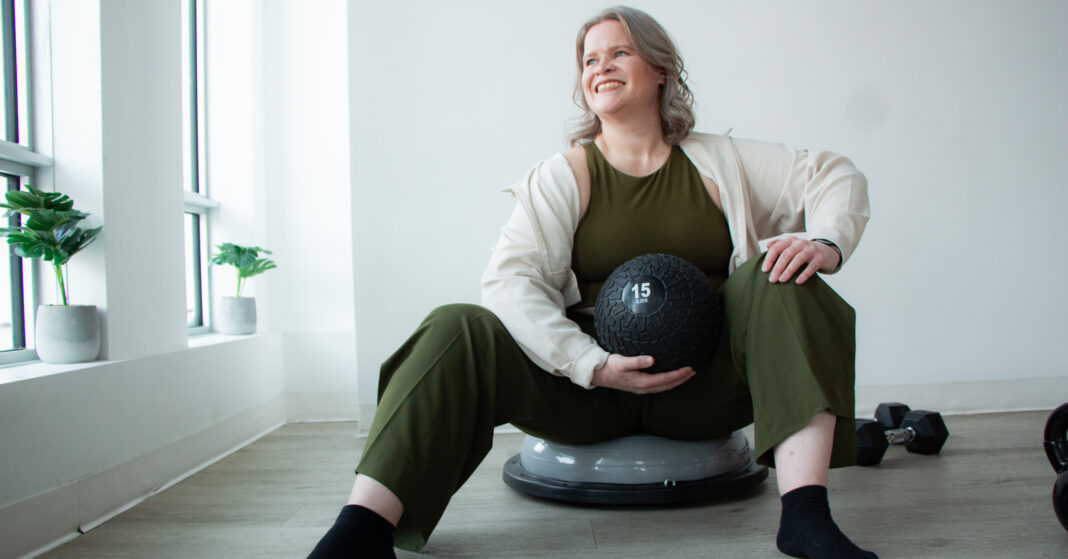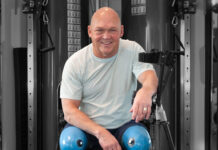For years, fitness has relied on shame-based advertising to motivate movement—focusing on what our bodies aren’t rather than celebrating what they can do. It’s been a go-to marketing strategy, as shame effectively sparks the intense momentum needed for behaviour change. But we forget—or ignore—that this burst fizzles out almost as quickly as it appears.
Researchers call this “shame-based motivation,” a pattern of motivational distress that leaves us stuck in frustration, guilt, and often exercise avoidance. Shame-driven intensity fuels unrealistic expectations and unsustainable goals. When these fail, they reinforce inadequacy, and each spark of shame grows weaker until many abandon their goals altogether.
The prominence of shame-motivation in social media may explain the rising aversion to traditional exercise programs. Statistics Canada reports that in 2023, only 11 per cent of Canadians had a gym membership, with 73 per cent preferring to exercise outside traditional gyms. Evidence suggests that current fitness promotion methods might be worsening the problem. A 2021 BMC Public Health study found that experiences of body-size stigma and fatphobia contribute to avoiding the fitness industry. Notably, many participants weren’t inactive; they simply preferred exercising in safer, more welcoming spaces, highlighting a crucial insight for an industry recovering from pandemic losses.
“I think people are tired of being told they aren’t good enough and that their entire existence should revolve around their body size,” reflects Linden, who, after years of shame-induced disordered patterns, rekindled their relationship with exercise through joy. Today, they proudly co-facilitate “Fat, Fit, and Fearless,” a weekly fitness program dedicated to fat-liberation. “Community and support motivate me much better than shame ever did.
Joyful movement isn’t just a feel-good approach; it’s an evidence-based strategy that promotes sustainable physical activity through fostering intrinsic motivation, autonomy, and self-acceptance. Research shows that framing exercise as inherently enjoyable and empowering leads to more consistent habits, better physical health, and improved self-confidence and self-esteem. Emphasizing immediate gratification and the dopamine-heavy feelings of accomplishment and pride, joy-based movement reinvents the act of moving as the goal itself, fostering a happier, more embodied life both now and in the long term.
This shift may seem daunting for those entrenched in shame-based exercise cycles. However, small steps can lead to significant changes. These strategies are easy to implement and can quickly harness the motivational power of joy.
Protect your space
Shame has a way of unexpectedly creeping in when and where we least expect it. Take some time to remove potentially triggering sources, intentionally surrounding yourself with messages that inspire and elevate you.
Be here and now
While physical fitness is often seen as a long-term goal, its powerful effects can be felt almost immediately. From a mood boost and increased energy to improved circulation and flexibility, physical activity provides quick benefits that enhance your well-being now. These immediate gains can motivate ongoing commitment and make it easier to fit fitness into your routine. Remember, what you do today matters, so make every day count.
Focus on what you love
Contrary to popular belief all movement contributes to a healthier life. Everyday activities like walking the dog, playing with your kids, or dancing solo at the kitchen table can create a joy-filled, healthier day. Increasing the frequency or duration of these activities leads to immediate physical and mental benefits.
Capitalize on connection
While group-based exercise can be intimidating, support is key to staying motivated. Think outside the fitness “box” by exploring clubs, new hobbies, or virtual options. Invite friends to join you or create a sense of social connection from the comfort of your home.
Pause the prompts
While tracking can be useful, joyful movement encourages you to leave the smartwatch and scale behind. Instead of counting steps, set an hourly alarm for a “body scan” to check if you need to walk, stretch, drink, or eat. Replace heart rate monitors with self-checks on your work intensity, aiming for a seven or eight out of 10 during vigorous activities. Focus on how you feel rather than tracking minutes. Swap fit-scrolling for gratitude journaling. Responding to your own cues boosts intrinsic motivation, which is more powerful than external metrics.
Be gentle with yourself
Remember, deconstructing harmful beliefs is a non-linear process. If you notice yourself falling back into shame-filled patterns, remind yourself that setbacks are part of the journey, and each
step forward counts.
Photography by Anna Liska
You may also like: Athletes with IMPACT

Read This Story in Our 2024 Fall Fitness Issue
IMPACT Magazine Fall Fitness Issue 2024 featuring Canadian figure skating icon Elladj Baldé, Paralympic shot putter Greg Stewart, Indigenous rights trail running Anita Cardinal. Adventure travel with some amazing winter getaways, strengthen your back and hips, find the art of joyful movement, Inclusivity in the fitness industry and so much more!

















